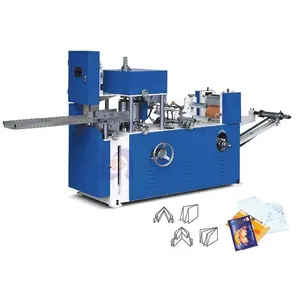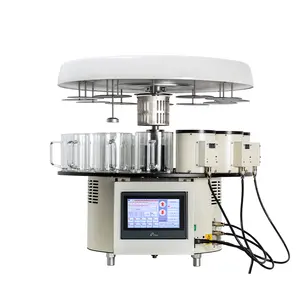
Automatic Napkin Tissue Paper Machine High Speed Automatic Serviette Napkin Folder Facial Tissue Napkin Paper Making Machine For Sale

SKZ1025 Fiber Agitator Laboratory Standard Pulp Disintegrator











The realm of histopathology has been revolutionized with the advent of histology automatic tissue processors. These sophisticated devices are pivotal in preparing tissue specimens for microscopic examination, ensuring that the intricate details of cellular structures are preserved and visible for accurate analysis. The integration of automatic tissue processor in histopathology has streamlined workflows, enhancing the efficiency and reliability of tissue preparation.
Within the category of histology automatic tissue processors, there exists a diverse range of models designed to cater to various histopathological needs. From compact benchtop units suitable for smaller labs to high-capacity floor models for bustling medical centers, each processor is engineered to facilitate the meticulous process of tissue fixation, dehydration, clearing, and infiltration. The application of these processors spans across clinical and research settings, where the preparation of tissue samples is required for diagnostic or scientific exploration.
The operational prowess of automated tissue processing in histopathology lies in their ability to maintain precise control over processing parameters. This ensures that each tissue sample undergoes the exact chemical exposure necessary for optimal preservation. With user-friendly interfaces, these processors allow for the programming of multiple processing protocols, adapting to the varied requirements of different tissue types. Moreover, advanced models come equipped with features such as smart temperature controls and internal printers, enhancing their functionality and user experience.
Constructed from durable materials such as metals and hardened fibers, histology automatic tissue processors are designed for longevity and consistent performance. Their robust build is complemented by a design that emphasizes ease of maintenance. Many models are engineered to minimize the need for frequent servicing, ensuring that laboratories can maintain a focus on their critical work without undue interruption.
The transition to automated tissue processing in histopathology offers a multitude of advantages. These processors provide a level of precision that manual processing cannot match, leading to enhanced consistency in sample quality. Automation also significantly reduces the potential for human error, which is crucial in a field where accuracy is paramount. Additionally, the ability to conduct multiple tests simultaneously without sacrificing quality is a testament to the advanced capabilities of these processors.
Selecting the appropriate histology automatic tissue processor is a critical decision for any laboratory. Factors such as sample throughput, available space, and specific processing needs should guide the choice. Alibaba.com hosts a comprehensive collection of these processors, allowing buyers to compare different models and features to find the one that aligns with their operational requirements. While the platform facilitates connections between buyers and a global network of suppliers, it is essential to consider the specifications and capabilities of each unit to ensure it meets the specific demands of your histopathological procedures.